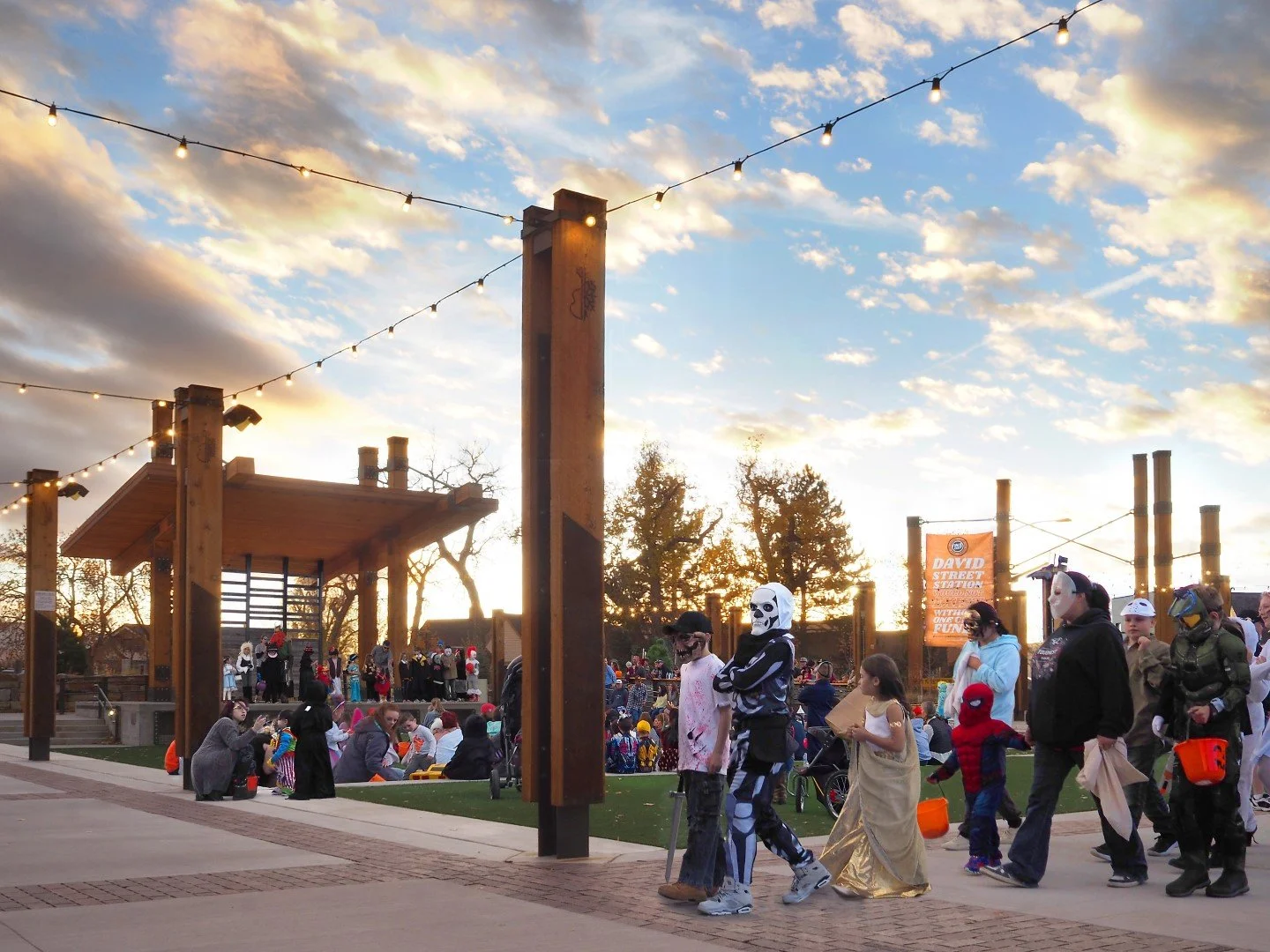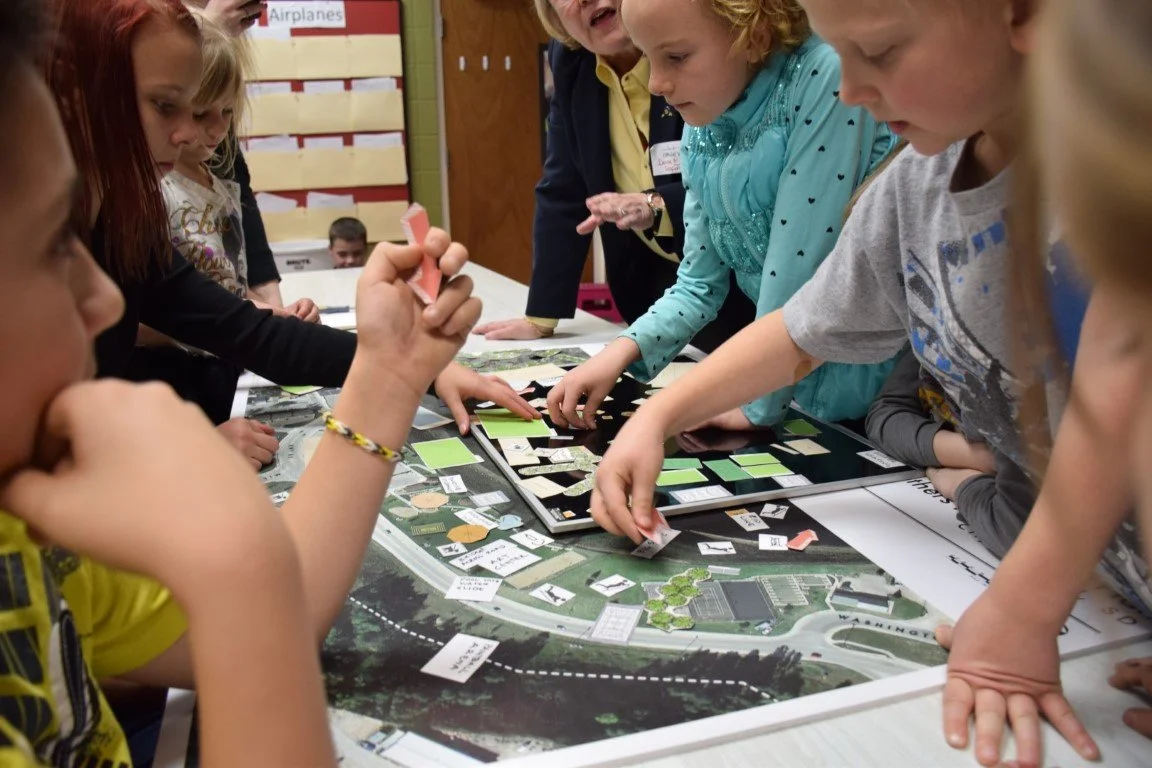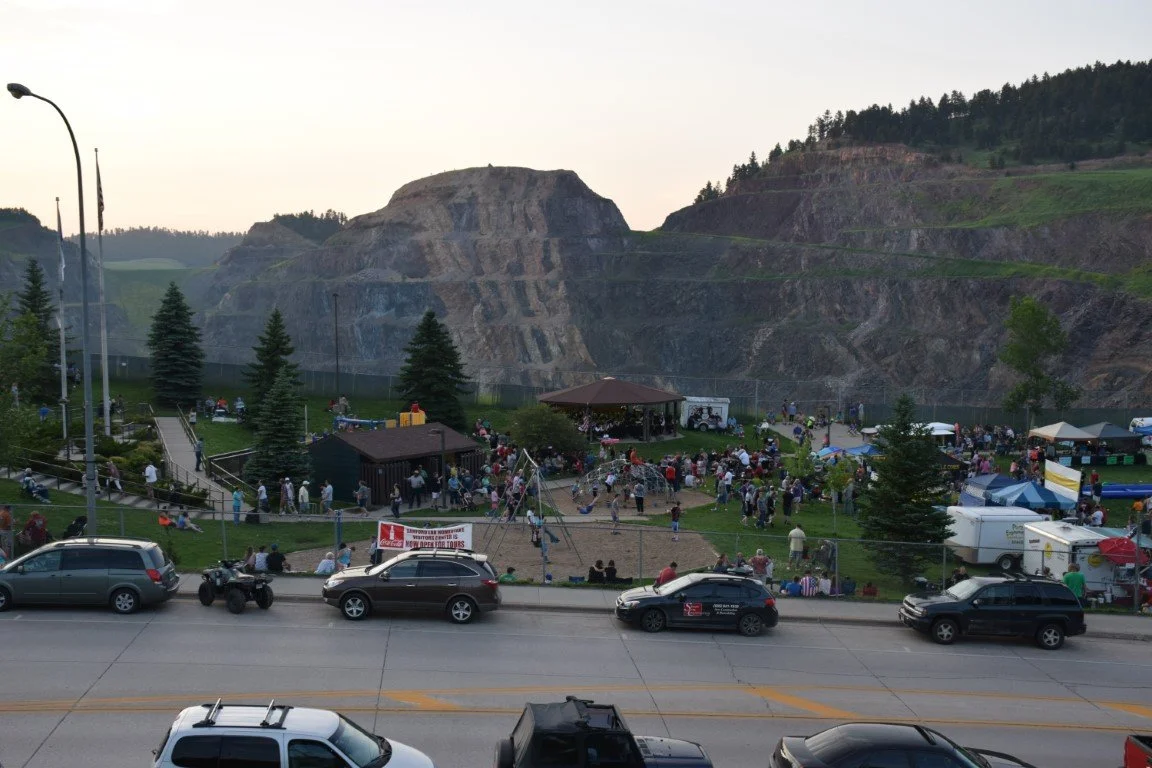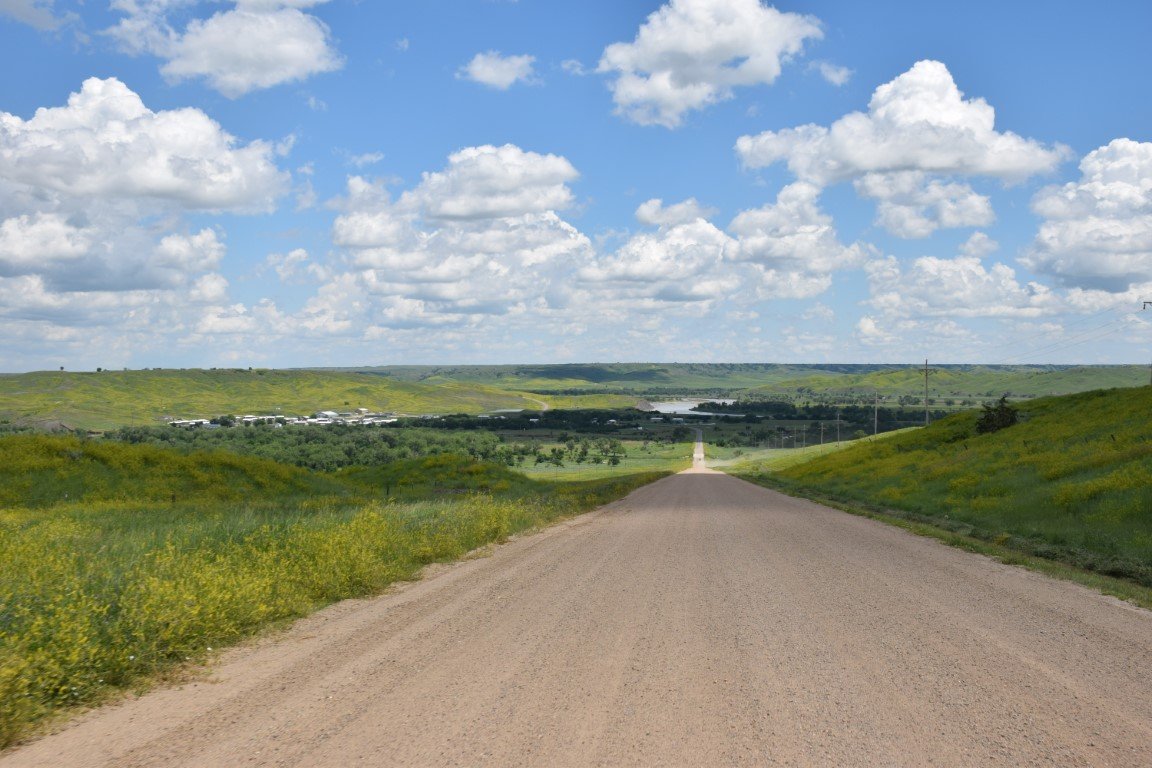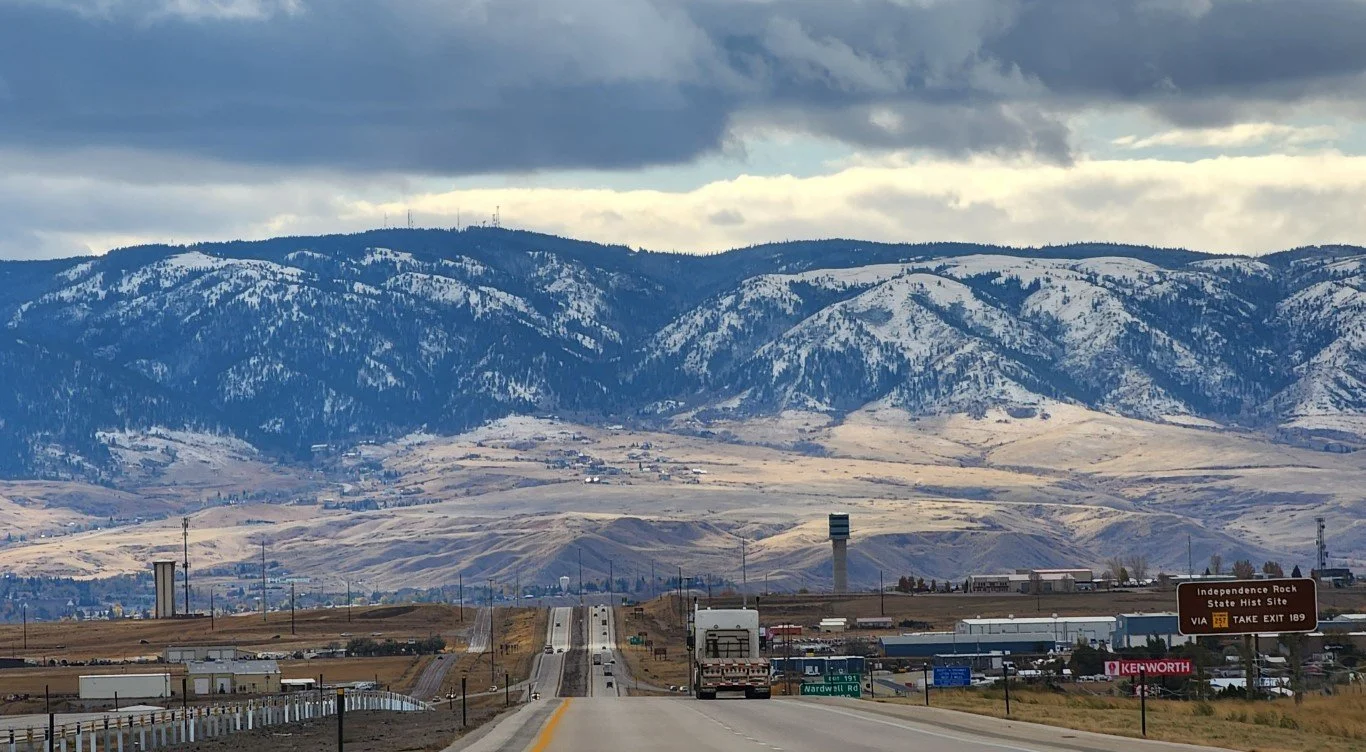TALLGRASS LANDSCAPE ARCHITECTURE
Landscape architect’s Matt Fridell and Tanya Olson are the partners of Custer South Dakota-based Tallgrass Landscape Architecture.
When we were first introduced to Tanya and Matt, they were described as ‘the real deal.’ They were the founders of a rural South Dakota design firm with an exceptional portfolio of beautiful place-based work throughout their region, who also spoke eloquently and thoughtfully about their role as designers in small-town America.
Speaking with them, we found that and much more. Tanya and Matt shared a spirit of generosity and wisdom that is the hallmark of individuals who are dedicated to their community and empowered to make a difference. They told us stories of what they have given to their community and how their community has given back to them. They gave us invaluable language and insights into how they have found success as designers working primarily in rural communities. And their work stands as a brilliant example of the power and possibility of expanding design and design thinking in rural communities from the inside.
They are leading thinkers and practitioners of place-based design in rural America, and we are thrilled to share their perspectives with you.
Prologue: We live and practice landscape architecture in western South Dakota in the middle of one of the least populated parts of the United States. The states that we practice in have the lowest population density by far in the lower 48 states. While we do work in the two cities in our region (<80,000 EACH) the majority of the communities we work with fall between 800 to 12,000 people. Aside from three years in northern CA and many years in Minneapolis, we’ve been rural people for most of our lives.
We practice from Custer, SD, a town of about 1,800 people and Matt’s hometown, with the rest of our staff working remotely from Rapid City and Pierre, South Dakota and Bismarck, North Dakota. And though our staff live in some of the larger towns of our states, they all hail from rural communities. In rural places we think about community at different scales – local, regional, and statewide. In these low-density states, there really is not much difference between the three, so when we say “our community” we are often talking about all of those scales at once. Also, although we do some work for state parks and ranch lands, most of our work is focused in and around towns.
This dialogue is a way for us to talk about what rural places and people have taught us about design, dispel some misconceptions about rural areas, and talk a little bit about how we approach design for rural places.
Matt Fridell and Tanya Olson, the founding partners of Tallgrass Landscape Architecture in Custer South Dakota.
You both are deeply immersed in the community you live and work in. Can you talk about your involvement in your community outside of your landscape architecture practice and the importance of the relationships you've built through that work?
Our lives and work are deeply interwoven with our community. We think it’s informative and interesting to share a vignette about our community’s response to an environmental challenge that illustrates the warp and weft of our involvement in our place and is a glimpse of how rural communities work.
In 2012 the forests of the mountain west were in the throes of a severe Mountain Pine Beetle infestation that killed millions of acres of Lodgepole and Ponderosa Pines. The forests were on the verge of ecological catastrophe and their future seemed apocalyptic...or that’s what it FELT like to the people of the Black Hills in western South Dakota. The familiar pine landscape, core to the Black Hills identity, was changing quickly and drastically. Hundreds of thousands of acres were turning orange-brown and dead or dying. Many communities here were built on and livelihoods continue to depend on the health of the forest - as a resource, for recreation, and for quality of life. People were worried about the impact of the mountain pine beetle on our communities and economy.
In Custer, a local woman invited a group of community members together to talk about what was happening to the forest. Inspired by a sculpture she had seen in another state, she had a vision for a community artistic response to the epidemic. Matt was part of (and continues to be part of) this ad-hoc group of community members who organized a full “Year of Mourning” - events that included book readings and discussions about forest ecology and the beetle and collaborative action between local people, forest managers, fire fighters, and businesspeople. The year culminated in a community event “grieving” the massive landscape change through music, arts, parades, and a big bonfire with fireworks. They called it the Bark Beetle Blues and it was so successful that the group has continued the celebration with the now named Burning Beetle Festival.
Even though the cyclical pine beetle epidemic is over for now, this festival has become an important community event that has invigorated an otherwise dead economic season (winter in a tourist town) and because we create it by and for ourselves, has contributed to stronger social bonds throughout the community. Ingrained into the festival is a yearly retelling of community oral history about the ecosystem we live in, the role of fire, and of the endemic Mountain Pine Beetle.
The impact of this event ripples out in many ways. It is a significant outreach event for the volunteer fire department, a friendly non-contentious setting to interface with the USFS, it funds arts programming, and perhaps most important is our third space – where we experience a transformative sense of self and community identity.
What does this event tell us about rural communities? That individual people have a huge lasting impact (in fact, rural towns can’t function without volunteers). That rural people think deeply and knowledgeably about their place, and they invest time in shared narratives about their landscape. And that if you want something done, whether for necessity or for fun, you usually must organize it yourself.
This event is only one of the many parts of our community we’re involved in. One or both of us have served on and taken leadership roles in the school board, downtown beautification committees, County zoning committee, the county housing authority, the arts council, the economic development organization, and state-wide boards for community and economic development. This service work has been a sort of 22-year field study of rural communities, how they function, and what is important to them. Through this work, we have built a diverse network of people that help us understand “rural” from many perspectives. We have expanded our knowledge of public policy, education, community and economic development, public health, and housing issues. It has informed our understanding of the complex ecosystem of the social, financial, political, cultural, built and natural environments of a rural community as described by the Community Capitols Framework by Flora & Flora.
The impact to our personal and professional lives has been profound. Personally, we feel a sense of belonging and purpose and strong sense of interdependence with our community. Professionally, we use our knowledge and this network in our day-to-day work, significantly broadening what we bring to the table professionally.
Our main conclusion after years of rural community involvement is that projects that improve the built environment are only a small part of the equation of what makes a community successful. That is why our mission at Tallgrass is deliberately broad: to be creative partners for inspired placemaking; helping to create flourishing communities with high quality everyday lives through collaborative place-inspired design.
The community of Custer, SD just celebrated it’s 10th annual Burning Beetle Festival.
How do you build impactful public work in communities with little funding behind their projects?
That is an interesting and loaded question, so we want to deconstruct it to answer. What do we mean by impactful public work / projects in a rural community? What about funding in a rural community?
What is impactful public work? In rural communities even the smallest plans can shift the mindset of the residents. Even reframing the questions being asked can change the perceptions around projects, community assets, or the most blighted corner in town. We have found that the time spent understanding the reason for the project, exploring the questions and issues it is trying to solve, and carefully framing the conversation around the project makes a difference in the quality and relevance of our work. At times asking “why?” means there is no built project if there is no good answer. Sometimes the answer is modest works that are incremental steps toward a larger vision, like a sign or a fire-wise garden. Sometimes these emerge as bigger ventures, but getting to construction is a journey, not a starting point.
Small steps help communities to build and strengthen the financial, social, and political capacity necessary to sustain these built projects. That means we work with the same organizations and communities over the span of decades, which reinforces our social ties and our sense of responsibility for their success. In that broad role we are facilitators, advisors, connectors, and creative problem solvers. In this scenario impact might not be measured as a built project, rather the building of the social cohesion necessary to someday build a project.
We work to be mindful of the negative impacts building projects can bring if built before the community capacity can sustain them. We have seen small towns across rural America invest in projects that are standard fare for landscape architects - plazas, streetscape improvements, and other built solutions intended to revitalize listless towns. But not all communities who invest in these types of projects get the flourishing economic engine they are led to expect. These formulaic approaches can be financially overwhelming, critically impacting the long-term sustainability and resiliency of a community. They can also simply fail due to poor vision or craftmanship. At the right time a plaza might be what is needed, but design professionals need to be able to see if the vision and capacity are aligned.
About that funding….it is a misconception that rural communities have little funding for projects. They undertake a wide variety of projects at all scales. You might be surprised what they can come up with if the community gets behind it or it arises from a practical need! Many communities are savvy about funding public projects through careful budgeting and planning, grants, TIFs (Tax Increment Financing), special tax assessments, and other funding mechanisms. In addition, they are usually aware of how good design impacts the local economy and quality of life, often thanks to the Main Street America program and initiatives like Wellmark Healthy Hometowns.
In rural states you can’t underestimate the power of the spread of ideas from one community to another or how internet access has changed the awareness the average person has of relevant projects and amenities. People want those great features in their towns too. And so, it is hard to find a rural community that hasn’t undertaken some kind of comprehensive plan, master plan, downtown revitalization or beautification project, walkability project, or other revitalization or quality of life initiative. But their interaction with designers is often limited to engineers. Every small town either has an engineer on staff or on retainer, so who gets called about these projects? Engineers. While we sincerely appreciate the expertise of engineers and enjoy working with them on a daily basis, creating solutions that strengthen the community ecosystem is not usually their strong suit. Landscape architects are uniquely suited to helping communities connect the dots between all of these components. Even though the funding can probably be found, we can’t stress enough that rural communities don’t have the extra financial or social capacity to absorb projects that don’t work well.
What we design impacts the long-term resilience of a community so we have to be really reflective and purposeful about how we balance what we are designing with the capacity of the community.
David Street Station is a multi-activity plaza and outdoor event space in downtown Casper WY. With the shared view of its community, this Tallgrass project took design inspiration from Casper’s long history with oil, the area’s core identity as the heart of the American West, and the City’s proximity to abundant natural beauty.
In what ways do you demystify the language around design, and what role does that play in your work?
Our values are reflected in the way we communicate, both in the language we use and our visual
communication. Design professions often use dense academic language when talking about design with other professionals. But that language is not appropriate in every context. Using overly complex language can come across as exclusionary and disrespectful, which diminishes openness, trust, and meaningful participation. It’s true in rural areas, but not because rural people are simple. That rancher may be a retired CEO of a fortune 500 company. It’s because clear straightforward language is a shared value that indicates expertise, competency, and good intentions.
This is also true in visual communication. Overly stylized graphic communication often doesn’t work well partly because they come across as fluff, particularly in a region where practicality and pragmatism are highly valued and decision makers know that every cent of taxpayer dollars spent is going to be scrutinized. It also doesn’t work well when it reveals judgmental attitudes toward the community. For example, a client recently shared a report done for their town by a large urban planning firm and the first thing we noticed is that every single photograph in the report showed the worst parts of the community in the worst possible light. The client was rightly upset. How different the reception of this plan would have been if the photographs were taken with a caring eye.
We try to find the beauty in every place we work. We don’t look away from those areas that maybe aren’t best parts of a community, which by the way EVERYONE knows are there, but we try to show them in the context of the pride and care people have for their community.
Rural people deserve access to good design that reflects their needs and values. We believe that to be successful, the design process must be highly accessible. So we work to meet people where they are and make sure that the language we use doesn’t get in the way. “Meeting people where they are” is a powerful concept that we’ve borrowed from harm reduction public health principals. It is founded on the belief in and respect for the health, dignity, and rights of the people we are working with. It humanizes and centers the individual or community as the author(s) of their own destiny. It also focuses on practical strategies to achieve the most good for the most people in whatever the context is, which fits well with the culture of our region. This principle helps us center the people as the knowledge holders about their community. Then, THEIR principals guide all decision-making. We think this leads to a design approach that is collaborative and interpretive so the community still shines through.
Harm reduction principles inform another of our core values, which is that the work we do is about the people we are designing for, not about us. These core values remind us to approach rural design in a way that is respectful, open, trusting, engaging, and maybe most importantly, finds and reveals the best parts of a community. They’re not hiring us because they think the beauty is NOT there – they’re hiring us because they care about their communities and want to see that expressed.
‘Build a Park’ exercise with the children of Lead South Dakota for Manuel Brother’s Park.
Lead was once the second largest city in South Dakota with a population of 8,382 people. Tallgrass has collaborated with the former gold mining town’s 2,982 residents on multiple projects, including a masterplan and a public park.
What advice would you give designers who want to start a practice in a rural community but need to know how?
We moved back to the Black Hills from northern California in 2001 to be in a place where our children would grow up outside with easy access to wild places and where our families were nearby. Maybe have a chicken or two. We had no idea if there was a place for landscape architects here and we reluctantly anticipated eventual career changes.
Matt brought his California job with him and Tanya worked on project-by-project basis for her former firm. We set up a small office in the garage with Custer’s third DSL line. We plugged in the fax machine and got to work on coastal assisted living facilities and subdivisions. Coming from working at our first post-college firms, we brought notions about landscape architectural practice with us and weren’t very optimistic about our future as landscape architects actually practicing where we live.
Almost everyone in a rural community is an entrepreneur. You’ll find that even someone with a steady forest service job is also a rancher. Rural work often has a seasonality as well, especially in a tourist town, with an ebb and flow of workers, work types, and activity. To get by in the lean winter months, people often have a side-hustle. For us, this meant that our communities (and state) have a strong support system for entrepreneurs. When we started Tallgrass, people asked us to help with their projects immediately.
So, the first thing we’d want you to know is that there IS opportunity for landscape architects in rural places, not just for practice but from an entrepreneurial standpoint. It is typically more affordable to experiment with starting your own practice here. New tools for remote working have exponentially expanded the opportunity to relocate to a rural community with fairly low risk, whether you carry your old job with you like we did or not. You’ll probably find yourself surrounded by other people trying to make their big idea work – or at least that was our experience.
We were helped along the way, of course. We can’t overstate how supportive our design colleagues were – the architects and engineers of our region were instrumental in helping us get our firm up and running and continue to be important design partners.
A few aspects of work we feel get often overlooked that might actually count as advice:
Cast a wide net geographically and in your practice. Five hours away at 80 miles per hour? No problem.
Be open to different work types. You never know where that relationship will take you in the future.
Connect with the designers who are already working in rural places like engineers, architects, and artists. You’ll never be able to connect with every potential client in your region, but if you connect with other professionals, they can do that leg work for you. They will bring work to you.
Landscape Architecture is a rare profession. There just aren’t that many of us. While our firms compete for specific jobs, we also celebrate the work of the other landscape architects. Everyone’s work needs to be great to elevate the profession!
We started working remotely and didn’t start our own firm until ten years later. That initial remote work allowed us to step slowly into the place and culture as community members and take time to develop the network which became critical to starting our practice.
Before you move, make sure they have the critical services you need. Print shops can be few and broadband isn’t available everywhere.
Start with an attitude of learning, enthusiasm, and respect for the communities you want to work in. Understand what is already being done in the region and why.
Get active in the social life of your community - show up, volunteer, get to know people, join the clubs, volunteer for boards, ask where you can help.
Connect with other entrepreneurs in the community – they are usually the people who are pushing the envelope.
Have a good attitude and appreciation for the place you are working – a cynical attitude will kill a project and relationship with your client.
Gravel Road to Cherry Creek, Cheyenne River Reservation, South Dakota
Road heading into Casper Wyoming
What does your ideal future for the rural countryside look like?
We’re really excited for the future of rural places!
We’re seeing some promising widespread trends of grassroots placemaking and community-building; local foods networks and regenerative agriculture practices; and supported community capacity building that will help towns be more resilient. But the challenges in front of us are as profound as they have ever been. We think that we are only beginning to see the effects of broadband availability which has enabled political-climate-economic-amenity migration, which puts a lot of pressure on the capacity of rural communities.
In our ideal future rural people can easily access the tools and skills needed to confront the next generation of challenges. We want to see thriving rural communities who work to build resilience instead of relying on continuous growth to sustain.
We want to see policy that acknowledges the special challenges of rural places and meets people where they are, particularly housing and education policy.
We want the language that we use to talk about contentious issues, like climate change, to speak to and elevate the work that rural people are already doing in this area on their own terms. We think by doing this we can find a lot of common ground in our goals.
And much the same as we’d wish for any place – we want to see thriving resilient communities that provide a strong sense of belonging and purpose for the people who live there with enough challenges to make it interesting for the next generations.
Images provided by Tallgrass Landscape Architecture


